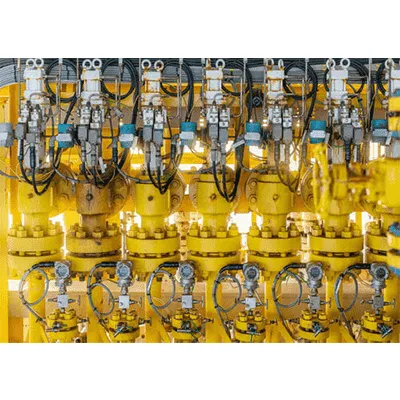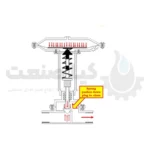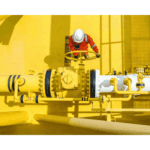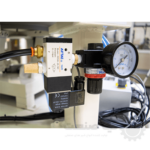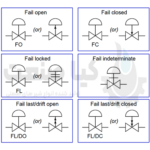Hydraulic flow control valves are essential components of most hydraulic systems and act as regulators and shut-offs for many systems in which fluid flows.
This post will focus on the operation of hydraulic flow control valves, the types available today, and the applications in which they are most commonly used.
A flow control valve in any hydraulic system is responsible for adjusting the fluid speed and by adjusting the speed, it can control the speed of an actuator in the system.
The flow rate is also responsible for determining the energy transfer rate at any given pressure level.
Since the speed of the actuator determines the rate of energy transfer.
Actuator speed is considered as an important function that affects the flow rate.
In contrast, directional control does not really deal with energy management.
Rather, the energy transfer system directs it to the right place in the system at exactly the right moment.
You can think of directional control valves as something like fluid switches that activate the appropriate contacts.
In such a way that they direct a type of high-energy input flow to the actuator input and thus provide a necessary return path for the oil, which has a low energy.
If the current doesn’t get to the right place at the right time, it doesn’t really matter if you can control the energy transfer using flow controls.
Therefore, it can be said that a secondary function of the control devices will be to schedule the cycle of events.
Since the fluid can be managed by a directional control valve, flow measurement and pressure control can also be achieved through their use.
How does a hydraulic flow control valve work?
Flow control valves in hydraulic systems are commonly used to regulate the pressure and flow rate of gases or liquids as they move through a pipeline.
These flow control valves are very important to optimize system performance.
Therefore, it is very important to choose the right milk for the job.
A flow control valve manages the flow rate in any given section of a hydraulic circuit system.
In a hydraulic system, a flow control valve will be used to control the amount of flow to the hydraulic cylinders and motors, which in turn affects the speed of both devices.
Hydraulic flow control valves also have a secondary function to manage the rate of energy transfer at a given pressure.
Types of hydraulic flow control valves
- needle valve
- diaphragm valve
- butterfly valve
- Plug valve
- ball valve
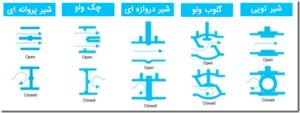 Types of hydraulic flow control valvesBall valves are one of the simplest types of flow control options and consist of a ball attached to a simple handle.
Types of hydraulic flow control valvesBall valves are one of the simplest types of flow control options and consist of a ball attached to a simple handle.
Since the ball has a hole in its center, when the handle is rotated, the ball hole aligns with the valve openings to allow fluid flow.
When you want to reduce or stop the flow.
This handle can be used to place the ball perpendicular to all valve openings, effectively blocking the fluid.
When assembling hydraulic circuits, there are a number of possible options for flow control.
And these options can range from very basic controls to very complex controls that are managed by electronics.
The most sophisticated of these options are able to detect pressure changes and respond accordingly.
Or they can monitor the flow rate and indicate the correct response when the rate exceeds a predefined threshold.
Diaphragm valves are used for throttle functions.
They are suitable for applications that include the use of corrosive liquids at low pressure and low temperature.
Gate valves are suitable for high pressure and high temperature applications.
They are generally used for gasless on/off operations that require direct fluid flow and minimal restriction.
Globe valves are used to start, stop and regulate fluid and for
Suitable for on/off applications as well as throttle applications.
A globe valve is a general purpose flow control valve that is very popular in applications involving high temperatures.
Directional hydraulic control valves
Instead of regulating flow, directional control valves provide a different function.
These directional hydraulic control valves transfer energy to the right place at the right time.
They hold fluid on standby to prevent flow in the system until it is needed to do the job.
When activated, the hydraulic directional control valves are turned on. After the operation is completed, they return to neutral.
In some cases, directional control valves can be used to achieve pressure and flow rate control by inhibiting fluid flow.
conclusion
Hydraulics refers to power transmission and is not a means of random fluid movement.
When a force pushes against a column of hydraulic fluid, it is just like pushing against a steel rod.
A liquid may be less compressible than a solid rod, but both transfer forces.
It is a common misconception that the hydraulic pump creates pressure in the system. However, the pump creates flow, not pressure.
Pressure is created by its resistance to flow. The bottom line is no flow, no pressure.
It is not uncommon for an operator to comment that their line does not have enough pressure.
In reality, the real issue is the flow rate. Unfortunately, some people working with hydraulics use the two terms interchangeably.
Knowing the difference between flow and hydraulic pressure and how one drives the other is key to achieving effective pump performance.
read more
Yoshitake thermostatic valve model OB-30

